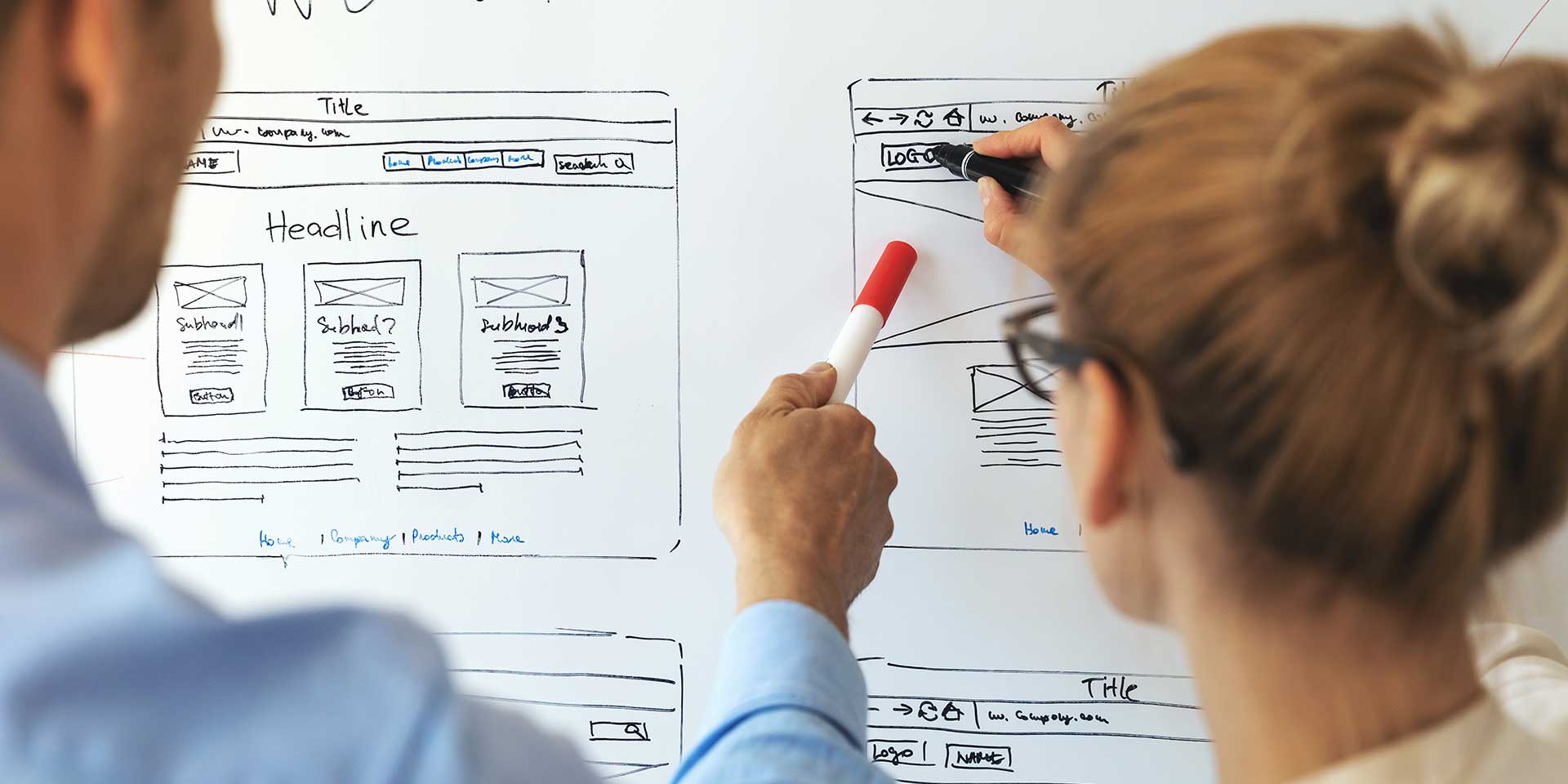What you'll learn
Learn UX design fundamentals with our design short courses in Sydney!
If you’ve ever wondered how to turn fuzzy ideas into sleek, user-friendly products, this one-day, hands-on workshop is your fast-track introduction to UX design. You’ll move beyond theory and discover the practical steps professionals use to bring clarity to complex problems from uncovering user needs through research and journey mapping, to sketching wireframes, running usability tests, and applying the fundamentals of accessible design.
This workshop isn’t just about learning concepts, it’s about doing the work of a UX designer. You’ll tackle a realistic design brief, collaborate in small groups, and test your ideas with rapid prototyping methods. Along the way, you’ll practise the same techniques used by UX teams in start-ups, digital agencies, and government services, guided by an experienced tutor who brings industry insights into the classroom.
Expect a lively mix of short explainers, structured exercises, and supportive feedback that will help you quickly build confidence in your design thinking. By the end of the day, you’ll walk away with a mini portfolio piece a tangible example of your UX process that you can showcase in your workplace or at your next job interview. Most importantly, you’ll leave with the mindset and methods to start creating designs that people genuinely enjoy using.
Learning outcomes
By the end of this UX design course, you should be able to:
- Explain the UX process and how it relates to product, UI and service design.
- Plan and conduct lightweight user research (interviews, observations, surveys) ethically.
- Synthesize findings into personas, problem statements and user journeys.
- Generate and prioritise ideas using structured ideation and IA basics.
- Create low‑fidelity wireframes and a clickable prototype that demonstrates task flows.
- Run and report a short usability test, capturing insights and next steps.
- Apply accessibility and inclusive design principles to common screens.
Session plan (6 × 60‑minute blocks)
Hour 1 — Orientation & Foundations
- Welcome, goals, day plan, housekeeping and accessibility commitments.
- What UX is (and isn’t): UX vs UI vs product; double diamond; agile fit.
- Activity: Lightning critique of everyday objects to surface usability heuristics.
- Output: Shared definition of success for today’s project.
Hour 2 — Research fast & ethically
- Choosing methods for time‑boxed discovery; writing good questions.
- Consent, privacy, note‑taking, observing bias; accessibility in research.
- Activity: Pair interviews with classmates on the provided brief; capture pain points.
- Output: Interview notes + top 3 insights.
Hour 3 — Synthesis to strategy
- Affinity mapping; themes; jobs‑to‑be‑done; problem framing.
- Personas and JTBD statements; mapping current journey & moments that matter.
- Activity: Create one proto‑persona and a problem statement; sketch a simple journey map.
- Output: Persona card + “How might we…?” statements.
Hour 4 — Ideation, IA & wireframes
- Diverge/converge: crazy‑8s, dot‑voting; information architecture basics.
- Flow design: tasks, states, and error handling; mobile‑first considerations.
- Activity: Sketch key screens; convert to low‑fi wireframes (paper first; Figma optional).
- Output: Wireframe set covering a primary user flow.
Hour 5 — Prototyping & accessibility
- Fidelity ladder; prototyping options; choosing interactions to test.
- Essentials of WCAG, colour contrast, typography and touch targets.
- Activity: Build a clickable prototype (Figma recommended) and add alt text & labels.
- Output: Shareable prototype link (or paper prototype) + accessibility checklist.
Hour 6 — Usability testing & storytelling
- Planning quick tests; tasks, metrics, think‑aloud; observation skills.
- Activity: 1–2 round‑robin usability tests per team; capture issues & priorities.
- Communicating outcomes: mini case‑study structure; next steps & stakeholder buy‑in.
- Output: Short read‑out (2–3 mins) with findings and recommendations.
Course tutors
Phillip Peet
Great reasons to enrol in a short course with us
Small classes
A personal approach means quality learning, so you can enjoy plenty of interaction with your instructor and the chance to ask questions.
Short & sweet
Our short courses & workshops get straight to the point, providing the skills you need with minimal commitment of your precious time.
Facilities & equipment
Our range of venues suit every type of course, are easy to get to, and have the equipment and tech needed to support your learning.
Easy, secure enrolment
Enrol online 24/7 with a safe, convenient 3-step process, and you can change your mind up to 7 days before class starts.
Quality instructors
Our educators bring first-hand experience and knowledge, with up-to-the-minute practices from diverse industries.
Business or pleasure
Our courses help you rapidly increase your skills and knowledge, for professional development or personal interest.
4.7 starsaverage rating on Google
1,400+courses to choose from
99%customer support rating
Classes Online Courses
<p>Learn <strong>UX design</strong> fundamentals with <a href="https://www.sydneycommunitycollege.edu.au/courses/design-technology"><strong>our design short courses in Sydney!</strong></a></p>
<p>If
...If there isn't a class to suit you, please join our waitlist and we will notify you when we have places available. Join waitlist for Basic UX Design - An Introduction
If there isn't a class to suit you, please join our waitlist and we will notify you when we have places available. Join waitlist for Basic UX Design - An Introduction






